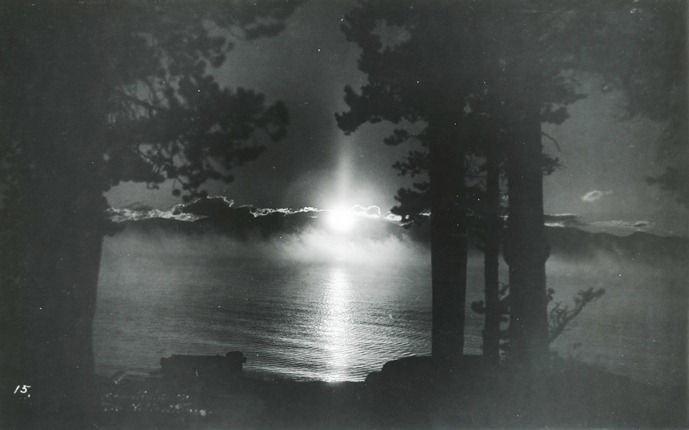
Moonlight and mist on Yellowstone Lake, date unknown. Photo: #YELL 124075
In the 20th century, Chief Rangers were tasked with answering letters sent in from all over the world. The majority of letters contain common questions such as, “When will Old Faithful geyser go off?”, “How many bears are in the park?”, “Where can I camp?” But sometimes, the questions being asked stray from the basic to the more unusual as was the case in October 1980. That month, Superintendant Thomas O. Hobbs received two letters asking about the presence of the elusive Bigfoot. The letters were dated only a week apart and possibly inspired by a reported Bigfoot sighting in nearby Jackson, Wyoming, earlier that year. That this was not the type of question that could be quickly answered by looking through records is evident by Hobbs’ replies, “We are unable to find any references to sightings of Bigfoot in Yellowstone’s historical natural history records… with no reported sightings, there really is nothing further to pursue at this time.”
Finding these few correspondences in a sea of letters about plants and recreational activities sparked some curiosity, not only about Bigfoot’s reported presence here, but also about other phenomenon that may have been reported. It was found that Yellowstone actually has a long history of strange occurrences, including reports of what has been dubbed “lake music” as early as the 1880s. Lake music has been described as a buzzing sound that moves across Lake Yellowstone. Hiram Chittenden, an early engineer in the park refers to an “overhead sound” in his 1895 book, Yellowstone National Park. Chittenden writes, “A most singular and interesting acoustic phenomenon of this region, although rarely noticed by tourists, is the occurrence of strange and indefinable overhead sounds. They have long been noted by explorers, but only in the vicinity of Shoshone and Yellowstone Lakes.” Lake music continues to be heard by those who visit the park and camp in the Lake area. The number of reports has led to scientific studies, yet no one has been able to conclude what causes the buzzing noise.
Thirty-three years after the letters inquiring about Sasquatch sightings, the Archives cannot claim to have official proof of Bigfoot sightings nor does it hold documents that can explain lake music. The Yellowstone Archives does hold the letters to, and replies from, the Chief Rangers to curious people around the world with questions ranging from the mundane to the unusual—all waiting to be discovered.
Sources: Natural Resources records, Yellowstone National Park Archives; Hiram Chittenden, Yellowstone National Park (1895).
